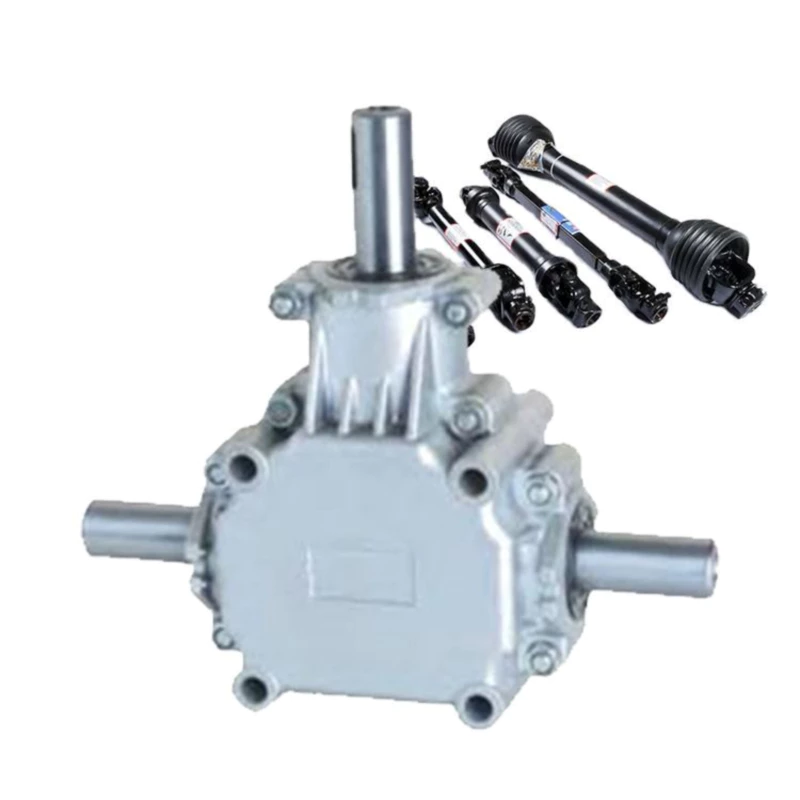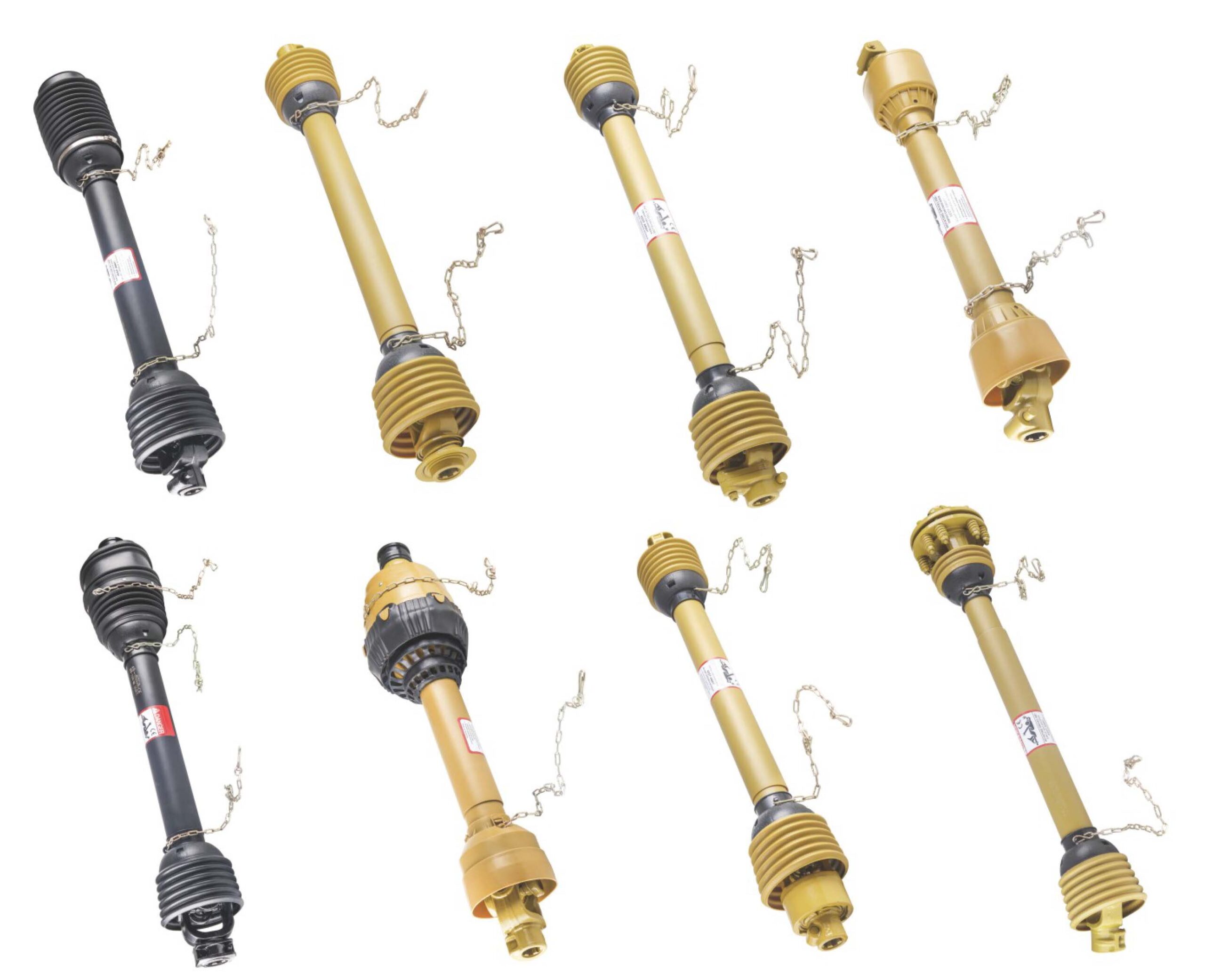How Does a PTO Gearbox Affect the Vehicle’s Overall Drivetrain Efficiency?
A Power Take-Off (PTO) gearbox is a mechanical device used to transfer power from a vehicle’s engine to auxiliary equipment or machinery. It is typically mounted on the vehicle’s transmission or driveline, providing a rotational power output through a driveshaft. In this article, we will explore the various aspects of a PTO gearbox and its impact on a vehicle’s overall drivetrain efficiency.
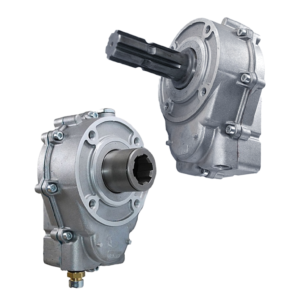
What Is a PTO Gearbox?
A PTO gearbox is a mechanical device that transfers power from a vehicle’s engine to auxiliary equipment or machinery. It does so by utilizing a driveshaft that rotates at a specific speed, based on the gear ratio of the PTO gearbox. The PTO gearbox is typically mounted on the vehicle’s transmission or driveline, and the driveshaft output can be used to power a variety of equipment and machinery.
Advantages of PTO Gearboxes
There are several advantages to using a PTO gearbox:
- Versatility: PTO gearboxes offer a versatile power source that can be easily connected to different types of equipment or machinery, allowing for multiple applications without the need for separate power sources.
- Efficient Power Transmission: PTO gearboxes efficiently transfer power from the vehicle’s engine to the driven equipment, ensuring minimal power loss during transmission. This results in improved overall system efficiency.
- Increased Productivity: By utilizing a PTO gearbox, equipment and machinery can be operated without the need for an additional engine or power source. This increases productivity by reducing downtime and simplifying the power transmission process.
- Cost Savings: PTO gearboxes eliminate the need for standalone engines or motors for auxiliary equipment, resulting in cost savings in terms of equipment acquisition, maintenance, and fuel consumption.
- Controlled Power Output: PTO gearboxes often provide multiple gear ratios, allowing users to adjust the output speed and torque to suit specific applications. This control over power output enables efficient operation and optimal performance.
- Integrated System Design: PTO gearboxes are designed to integrate seamlessly with the vehicle’s transmission or driveline system, ensuring compatibility and ease of installation. This integration simplifies the overall system design and enhances reliability.
- Durability and Longevity: PTO gearboxes are engineered to withstand heavy loads and continuous operation. They are built with robust materials and undergo rigorous testing, ensuring durability and long service life even in demanding working conditions.
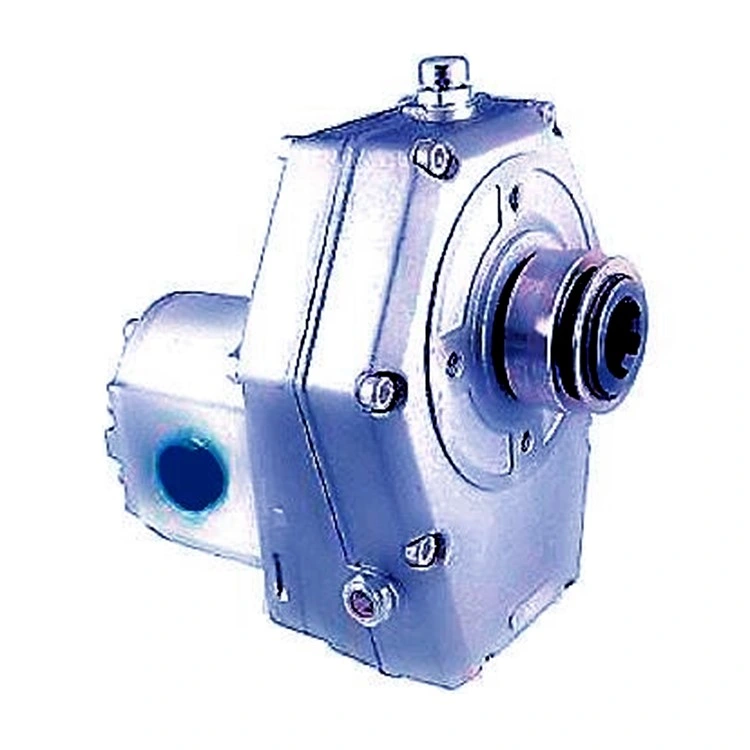
Applications of PTO Gearboxes
PTO gearboxes find applications in various industries and equipment, including:
- Agricultural Machinery
- Construction Equipment
- Trucks and Commercial Vehicles
- Industrial Machinery
- Emergency Vehicles
- Marine Applications
- Forestry Equipment
- Municipal and Public Works
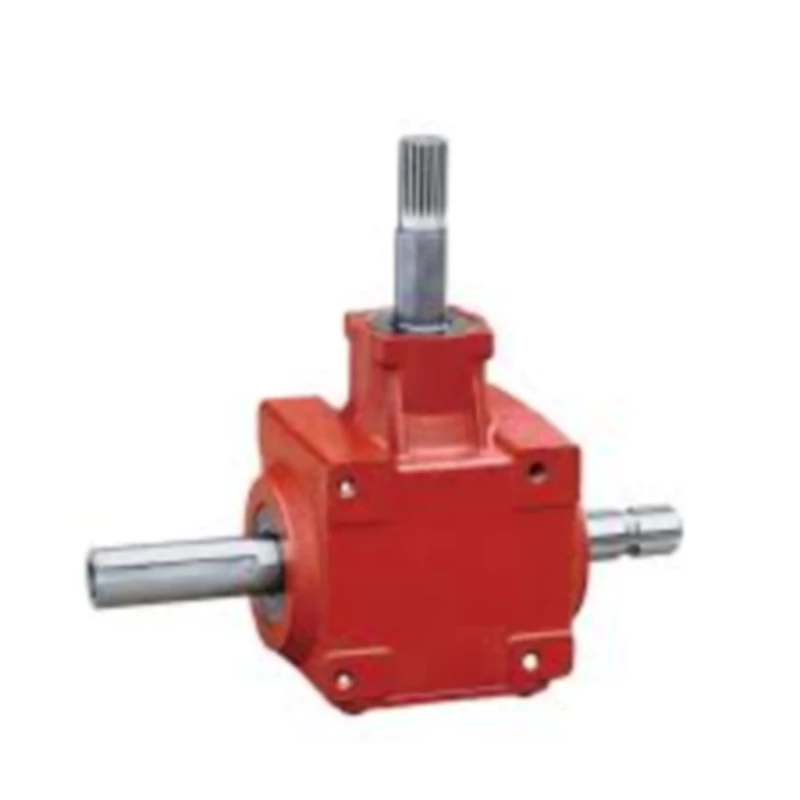
How Does a PTO Gearbox Work?
- Power Input: The PTO gearbox receives power from the vehicle’s engine through the input shaft.
- Power Transmission: The input shaft rotates the internal gears of the PTO gearbox, which then transmit power to the output shaft.
- Power Output: The output shaft rotates at a specific speed, based on the gear ratio of the PTO gearbox.
- Driven Equipment Operation: The driveshaft output of the PTO gearbox is used to power the auxiliary equipment or machinery.
Installation and Maintenance
- Installation: When installing a PTO gearbox, it is essential to follow the manufacturer’s instructions and guidelines.
- Lubrication: Regular lubrication is crucial for the smooth operation and longevity of a PTO gearbox. Ensure that the gearbox is adequately lubricated to minimize friction and wear.
- Inspection and Cleaning: Periodically inspect the PTO gearbox for any signs of damage, leaks, or excessive wear. Clean the gearbox and remove any debris or contaminants that may interfere with its operation. Pay attention to seals, gaskets, and other components that may require replacement or repair.
- Alignment and Tension: Check the alignment of the PTO gearbox and ensure that it is properly aligned with the engine and driven equipment. Also, inspect any belts or driveshafts for proper tension and adjust as necessary to maintain optimal power transfer.
- Regular Maintenance: Follow the recommended maintenance schedule provided by the manufacturer. This may include tasks such as changing lubricants, inspecting and replacing worn components, and performing any necessary adjustments or repairs.

How to Select a PTO Gearbox?
- Power Requirements: Consider the power requirements of the driven equipment and select a PTO gearbox that can handle the required torque and rotational speed.
- Compatibility: Ensure that the PTO gearbox is compatible with the vehicle’s transmission or driveline system. Consider factors such as input/output shaft sizes, mounting options, and connection methods.
- Gear Ratio and Speed Control: Evaluate the gear ratios available in the PTO gearbox and choose one that provides the desired output speed and torque for the intended application.
- Durability and Reliability: Look for a PTO gearbox that is built with durable materials and has a reputation for reliability. Consider factors such as load capacity, sealing mechanisms, and overall construction quality.
- Safety Features: Check if the PTO gearbox has safety features such as interlocks or guards to prevent accidental engagement or disengagement, ensuring operator safety.
- Easy Maintenance: Consider the accessibility of maintenance points and the availability of spare parts for the PTO gearbox. Choose a model that facilitates easy maintenance and has good manufacturer support.
- Budget and Cost Considerations: Evaluate the cost-effectiveness of the PTO gearbox while considering factors such as initial purchase price, maintenance costs, and potential long-term savings in terms of efficiency and durability.
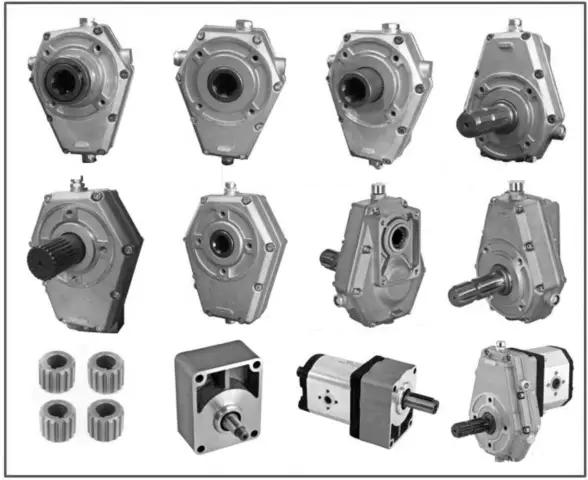
Common Problems and Solutions
- Noise and Vibration: Excessive noise and vibration from the PTO gearbox can indicate misalignment, worn-out components, or improper lubrication. Inspect and correct any misalignment of the gearbox and ensure that all components are in good condition. Check and replenish the lubricant as per the manufacturer’s recommendations.
- Slippage: Slippage occurs when the PTO gearbox fails to transmit power efficiently, resulting in reduced performance of the connected equipment. Check the tension of the PTO belt or shaft coupling and adjust it as per the manufacturer’s guidelines. Ensure that the belt is properly aligned and replace it if it is worn out or damaged. If using a shaft coupling, verify that it is securely fastened and aligned with the driven equipment.
- Overheating: Overheating of the PTO gearbox can lead to premature wear, decreased efficiency, and potential damage to the gearbox. Check for proper lubrication and ensure that the gearbox has the correct amount of lubricant. Verify that the lubricant is suitable for the operating conditions and replace it if necessary. Inspect for obstructions or restrictions in the cooling system and ensure proper ventilation around the gearbox.
- Leakage: Leakage of lubricant or hydraulic fluid from the PTO gearbox can occur due to damaged seals, gaskets, or worn-out components. Inspect the gearbox for any signs of leakage and identify the source. Replace damaged seals or gaskets and repair or replace any worn-out components as needed. Ensure that the fluid levels are maintained within the recommended range.
- PTO Engagement Issues: Difficulty in engaging or disengaging the PTO can be caused by mechanical or electrical faults, such as a malfunctioning clutch, faulty control switch, or wiring issues. Inspect the clutch mechanism and associated components for any damage or wear. Test the electrical connections and switches to ensure they are functioning correctly. Repair or replace any faulty components and ensure proper adjustment of the engagement mechanism.
- Excessive Load or Overloading: Applying an excessive load or overloading the PTO gearbox can result in overheating, premature wear, or even failure of the gearbox. Verify the maximum load capacity of the PTO gearbox and ensure that the equipment being driven does not exceed this limit. If necessary, upgrade to a gearbox with a higher load capacity. Monitor the load on the gearbox during operation and avoid overloading.
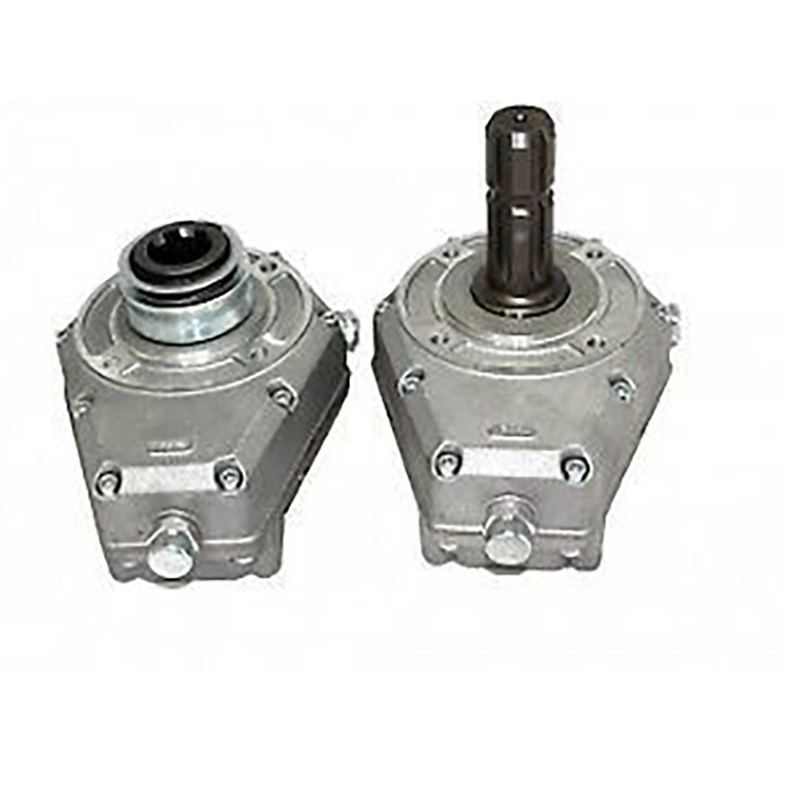
PTO Gearbox and PTO Shaft Relationship
The PTO gearbox and PTO shaft work together to transmit power from the vehicle’s engine to the auxiliary equipment or machinery. The PTO gearbox is responsible for transferring the power from the engine to the driveshaft, while the PTO shaft connects the driveshaft output to the equipment being driven. At PTO Gearboxes, we offer a wide range of PTO shafts that are compatible with various PTO gearboxes, ensuring optimal power transmission and efficiency.
